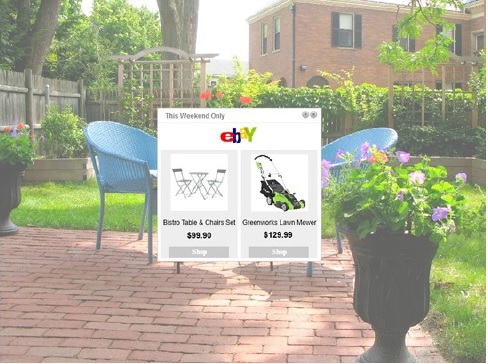It goes without saying that today’s online publishers have a world of choices when it comes to methods for monetizing their websites.
From standard banner ads to affiliate links, sponsored posts and free ebooks with sponsored content, there is definitely no shortage of options for publishers who want to generate a few extra dollars. Despite the endless amount of opportunities available, however, professionals in the biz are always on the hunt for new and effective ways to capitalize.
Most online users are getting a daily overdose of the aforementioned monetization methods. In an eager attempt to generate higher revenues, certain publishers have taken their run of the mill advertising efforts to the extreme. Luckily, a new cure has been found, which has been giving the older forms of online advertising a run for their money. If you haven’t heard of in-image advertising yet, now is the time to listen up. This younger, more fashionable form of advertising has been generating all of the buzz recently, and with good reason. Unlike the more static and impersonal methods of monetization, in-image advertising connects with users on an interactive level.
In-image advertising enables the image on the web page to become the platform for any interaction between advertisement and user. Now before you pass this motion off as being another logo or watermark, which has set up shop inside the image as oppose to alongside it, think again. In-image advertising is very different, and a trend that we are likely to start hearing a lot about in the months to come.
So who decided that advertising in the image as oppose to alongside it is better? Well, the decision wasn’t made overnight, and there are still a fair amount of in-image advertising skeptics. In defense of this new trend, we at imonomy, thought it might be best to list some of the benefits that in-image advertising has to offer.
While content plays a heavy role in the makeup of a website, the image is undoubtedly the ruler of the online territory. So, when a user lands on a page, more often than not, his eyes go straight for the image. This is in-image advertising’s first and most valuable plus. By advertising in the image as oppose to on the side bars of the web page, the user has no choice but to be captivated by both the image and the ad. When done successfully, the ad becomes an extended addition to the image and the user clicks simply because the impulse felt so natural.
In-image advertising, holds a not so secret weapon in the battle against contextual banner ads, and that weapon is space. When a publishers opts for adding a banner ad to the side bar of his website, it means he is opting out of adding social media buttons, a cool pic, or a related articles tab in it’s place. In-image advertising, on the other hand, allows the publisher to generate extra revenue, without taking up any valuable real estate from the web page. Being in the image, means not being anywhere else on the page, which means big pluses for both the publisher and the user experience.
Another pro in-image advertising brings to the table relates directly to one of the most important points on a publisher’s mind, looks. When building a website, most publishers focus on making sure that above all, their website looks good. So, for any publisher’s who want to revamp their web pages, in-image advertising is your best bet. No matter how snazzy the banner, ads on sidebars aren’t pretty. In-image advertising not only generates money, it does so in style.
Now, let’s talk dollars. In-image advertising is different than standard forms of online advertising, and as such we have to give users a grace period to adjust. That being said, in-image advertising has been making some major waves in the industry as of late and the buzz wasn’t generated solely around the aesthetic value of these ads. When done right, in-image advertising can generate significant volumes of additional revenue. So what is in-image advertising done right? Well, the key to hitting this nail on the head is to introduce advertisements into the image without altering the user experience. Your best bet to making in-image advertising feel natural, is to ensure that the ads themselves are all contextually relevant. Here at imonomy, contextual relevance, which has always played a major role in our business and uniqueness, is also at the heart of our in-image advertising model. Imagine you’re on a web page reading about the latest iphone updates, now imagine that the image on the screen displayed an ad for new iphone apps, or the latest deals on iphones. When it comes to in-image advertising, the key is in the flow. The more contextually in-tune your ads are with the other elements on the page, the higher your chances are of getting your users to click on the ads, which ultimately means more dollars in the bank.
For those of you who still hold the more mainstream forms of advertising very near and dear to your hearts, this is not a knock at your style. This is, however, a heads up that the times, well, they are a changin’. Up until recently in-image advertising has been taking quiet and strategic steps into the market, but now this proven method for generating new revenue has made it abundantly clear that in-image advertising will be here for long run.
Have you used image monetization methods on your website? If so lease share with us in the comment section bellow.
This post was co-written by Avishai Sam Bitton and Leytal Ross



I think people relate better to images as it gives them an idea of the post faster.